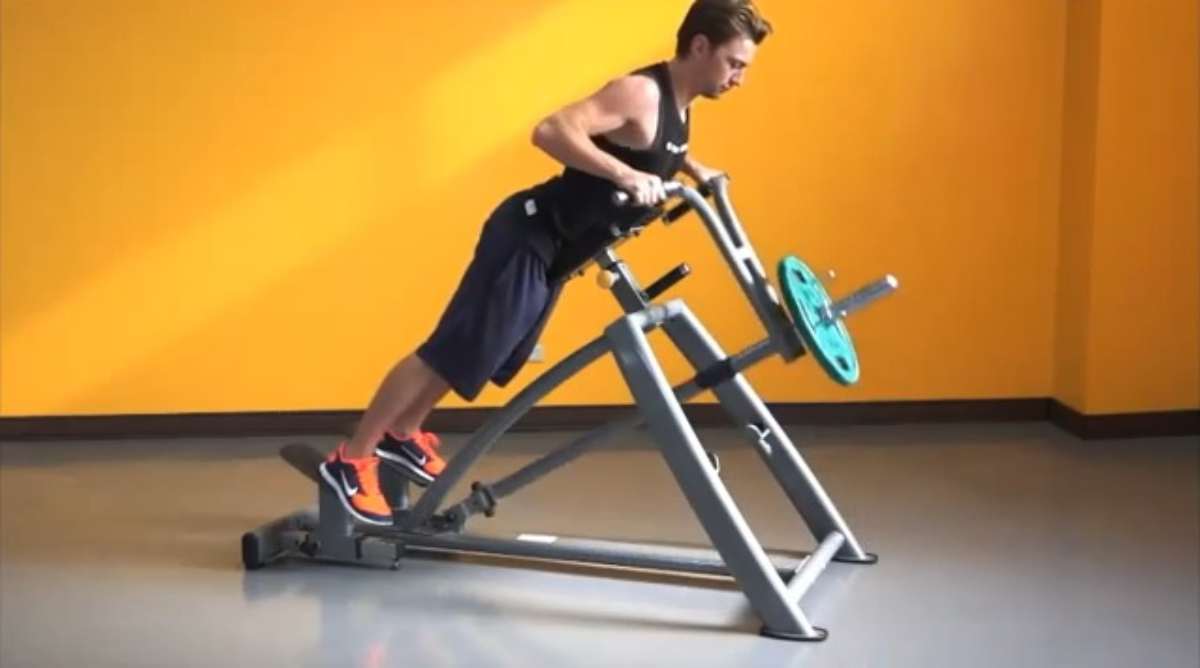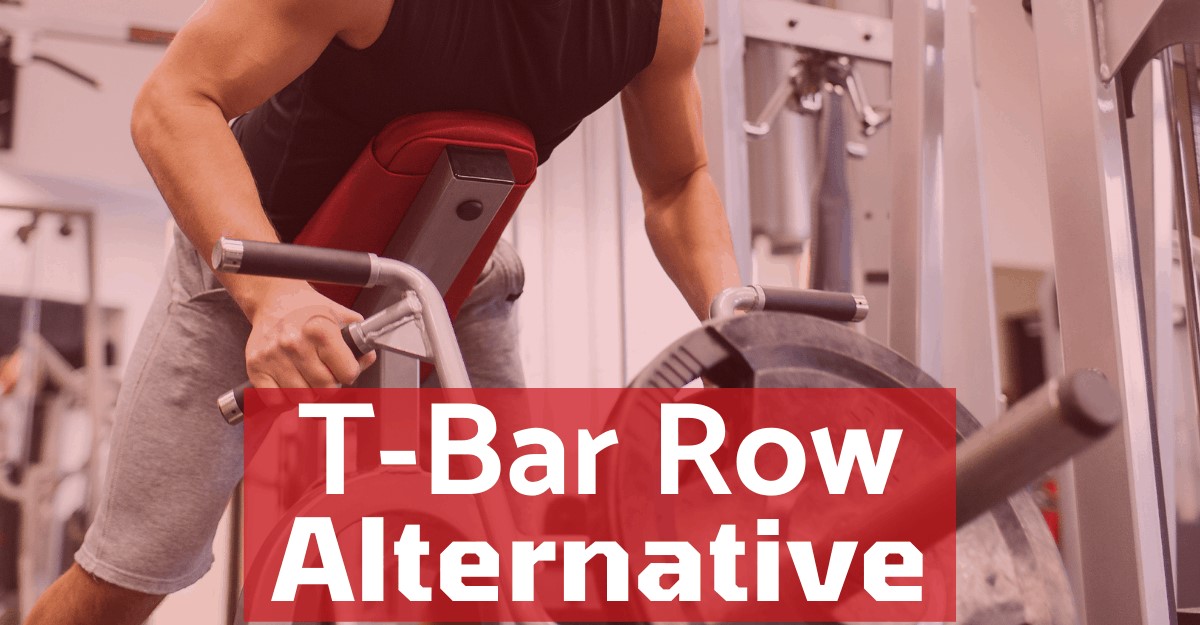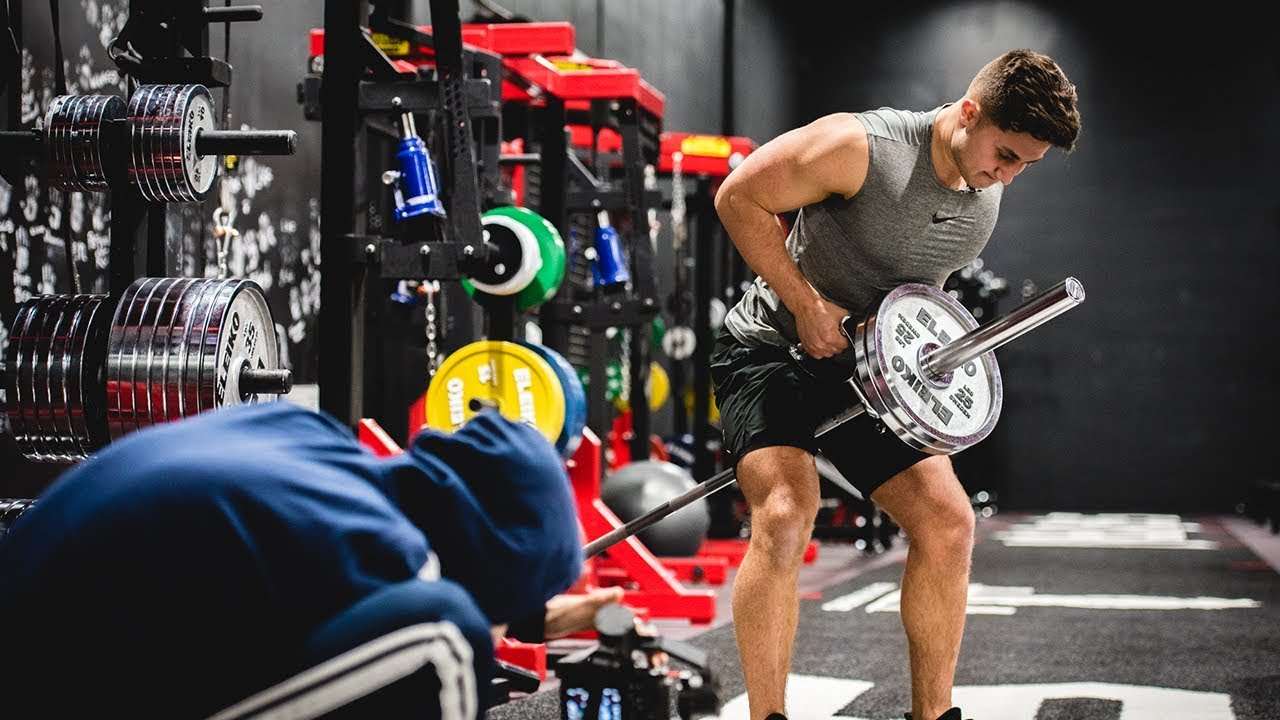The lats, rhomboids, and traps are the main back muscles that are worked out by the well-liked and efficient T-Bar Row exercise. It’s a compound movement that helps build strength, improve posture, and enhance overall upper body stability. This article will explore the benefits and proper technique of the T-Bar Row and offer alternative exercises for those seeking variety in their back training routine.
What is the T-Bar Row?
The T-Bar Row is a weightlifting exercise performed using a barbell or specialized T-Bar Row machine. It is named after the letter “T” formed by the position of the lifter’s body and the barbell during the movement. The exercise is done by standing with a slight bend in the knees, a flat back, and grabbing the bar with an overhand grip. The lifter then pulls the barbell towards the abdomen while maintaining a controlled motion, engaging the back muscles throughout the movement. The bar is then lowered back down to the starting position with control.
Benefits of the T-Bar Row

- Back Muscle Development: The T-Bar Row effectively targets the major muscles of the back, such as the lats, rhomboids, and traps, helping to create a strong and well-developed back.
- Improved Posture: As the T-Bar Row strengthens the muscles responsible for maintaining proper posture, regular performance of this exercise can help alleviate and prevent back pain caused by poor posture.
- Compound Movement: The T-Bar Row is a compound exercise, meaning it involves multiple muscle groups working together. Compound movements are efficient for building overall strength and muscle mass.
- Core Stability: To maintain balance and stability during the T-Bar Row, the core muscles are engaged, leading to improved core strength.
Read: Kinemaster for PC
Proper Technique for T-Bar Row
Follow these steps to ensure proper form when performing the T-Bar Row:
- Stand with your feet shoulder-width apart, and keep a slight bend in your knees.
- Bend at the hips while maintaining a flat back, keeping your chest up.
- Grab the handle of the T-Bar Row machine or a barbell with an overhand grip, hands slightly wider than shoulder-width apart.
- Initiate the movement by retracting your shoulder blades and pulling the barbell towards your abdomen. Focus on squeezing your back muscles at the top of the movement.
- Lower the barbell slowly and with control back to the starting position.
9 Best T-Bar Row alternatives

9 T-Bar Row alternatives that can help you achieve a powerful and well-developed back.
1. Bent-Over Barbell Rows:
One of the most classic alternatives to the T-bar row is the Bent-Over Barbell Row. This compound movement primarily targets the same muscle groups as the T-bar row but offers a few distinct advantages. The exercise can be performed with a standard barbell, making it accessible to anyone with access to basic gym equipment.
How to perform Inverted Rows:
- Stand with your feet shoulder-width apart and a slight bend in your knees.
- Hold a barbell with an overhand grip, hands slightly wider than shoulder-width apart.
- Hinge at the hips, keeping your back straight and core engaged. Lower your torso until it is almost parallel to the ground.
- Pull the barbell towards your lower chest by retracting your shoulder blades and squeezing your back muscles.
- Lower the barbell back to the starting position in a controlled manner.
2. One-Arm Dumbbell Rows:
One-Arm Dumbbell Rows are another fantastic T-bar row alternative that emphasizes unilateral training. This exercise provides an opportunity to work each side of your back independently, ensuring balanced strength development and reducing the risk of muscle imbalances.
How to perform Inverted Rows:
- Place one knee and the same-side hand on a flat bench, ensuring your back is parallel to the ground.
- With the other hand, hold a dumbbell, allowing it to hang down towards the floor.
- Pull the dumbbell up towards your torso, keeping your elbow close to your body and squeezing your back muscles at the top of the movement.
- Lower the dumbbell back down with control and repeat for the desired number of reps before switching sides.
3. Cable Rows:
Cable Rows are a versatile T-bar row alternative that can be performed using a cable machine found in most gyms. This exercise allows for a constant tension on the muscles throughout the range of motion, promoting muscle hypertrophy and strength gains.
How to perform Inverted Rows:
- Set up a cable machine with a straight or V-shaped bar attachment at chest height.
- Stand facing the machine with your knees slightly bent and feet shoulder-width apart.
- Grasp the handle with both hands, arms fully extended in front of you.
- Pull the handle towards your torso, retracting your shoulder blades and squeezing your back muscles.
- Slowly extend your arms back to the starting position, maintaining tension on the muscles.
4. Inverted Rows:
The Inverted Row, also known as the bodyweight row or Australian pull-up, is an excellent alternative to the T-bar row that can be performed with minimal equipment. This exercise primarily targets the upper back muscles, rear delts, and biceps. It also engages the core and stabilizer muscles, making it an effective compound movement.
How to perform Inverted Rows:
- Set up a barbell or TRX straps at waist height.
- Lie on your back underneath the bar or straps, gripping it with an overhand grip, hands shoulder-width apart.
- Keep your body straight and aligned, and pull your chest towards the bar/straps by squeezing your shoulder blades together.
- Lower yourself back down with control.
5. Seated Cable Rows:
Seated Cable Rows are a versatile exercise that targets the lats, rhomboids, traps, and biceps. This exercise allows for continuous tension throughout the movement, making it highly effective for building muscle and strength in the back.
How to perform Seated Cable Rows:
- Sit on the cable row machine with your feet against the footrests, knees slightly bent.
- Grasp the handle with an overhand grip, arms extended.
- Pull the handle towards your torso by squeezing your shoulder blades together, and then slowly release back to the starting position.
6. Barbell Deadlifts:
Barbell Deadlifts are a compound exercise that primarily targets the lower back, glutes, hamstrings, and traps. While it differs from the T-bar row in movement pattern, it is an excellent alternative for overall back strength and functional power.
How to perform Barbell Deadlifts:
- Stand with your feet hip-width apart, toes under the barbell.
- Bend at your hips and knees to grip the barbell with a shoulder-width overhand or mixed grip.
- Keeping your back flat and chest up, lift the barbell by extending your hips and standing tall.
- Lower the barbell back down with control.
7. Pendlay Rows:
Pendlay Rows are a variation of the barbell row, named after weightlifting coach Glenn Pendlay. This exercise targets the entire back, especially the lats, rhomboids, traps, and rear delts, while also engaging the core and lower body for stability.
How to perform Pendlay Rows:
- Stand with your feet shoulder-width apart, knees slightly bent, and grip the barbell with an overhand grip, hands slightly wider than shoulder-width.
- Hinge at your hips, keeping your back flat, and lower the barbell to the ground.
- Explosively pull the barbell towards your chest, squeezing your shoulder blades together.
- Lower the barbell back down to the ground with control before each rep.
8. Smith Machine Bent Over Row:
The Smith Machine Bent Over Row is a variation of the barbell row performed on a Smith machine. The guided movement helps maintain proper form, making it suitable for beginners or those with back issues. It targets the lats and traps, aiding in muscle growth and improved posture.
How to perform Smith Machine Bent Over Rows:
- Stand facing the Smith Machine and position the barbell at hip level.
- Grab the barbell with an overhand grip, hands slightly wider than shoulder-width apart.
- Step back, maintaining a slight bend in your knees, and hinge at your hips to lean forward.
- Pull the barbell towards your abdomen, squeezing your shoulder blades together.
- Lower the barbell back down with control.
9. Kettlebell Row:
The Kettlebell Row is a unilateral exercise that engages the lats, traps, and rhomboids while also challenging your core for stability. This exercise can help correct muscle imbalances and improve overall back strength.
How to perform Kettlebell Rows:
- Place a kettlebell next to your feet.
- Hinge at your hips, maintaining a flat back, and grip the kettlebell with one hand.
- Keep your free hand on a stable surface for support.
- Pull the kettlebell upwards towards your chest, squeezing your shoulder blades together.
- Lower the kettlebell back down with control.
Conclusion:
Incorporating a variety of T-Bar Row alternatives into your back workout routine not only prevents workout plateaus but also helps target different muscle fibers and promotes balanced muscle development. Whether you have access to heavy gym equipment or prefer bodyweight exercises, these 9 alternatives provide effective ways to build a strong, muscular back. Always ensure proper form and technique to maximize gains and reduce the risk of injury.


